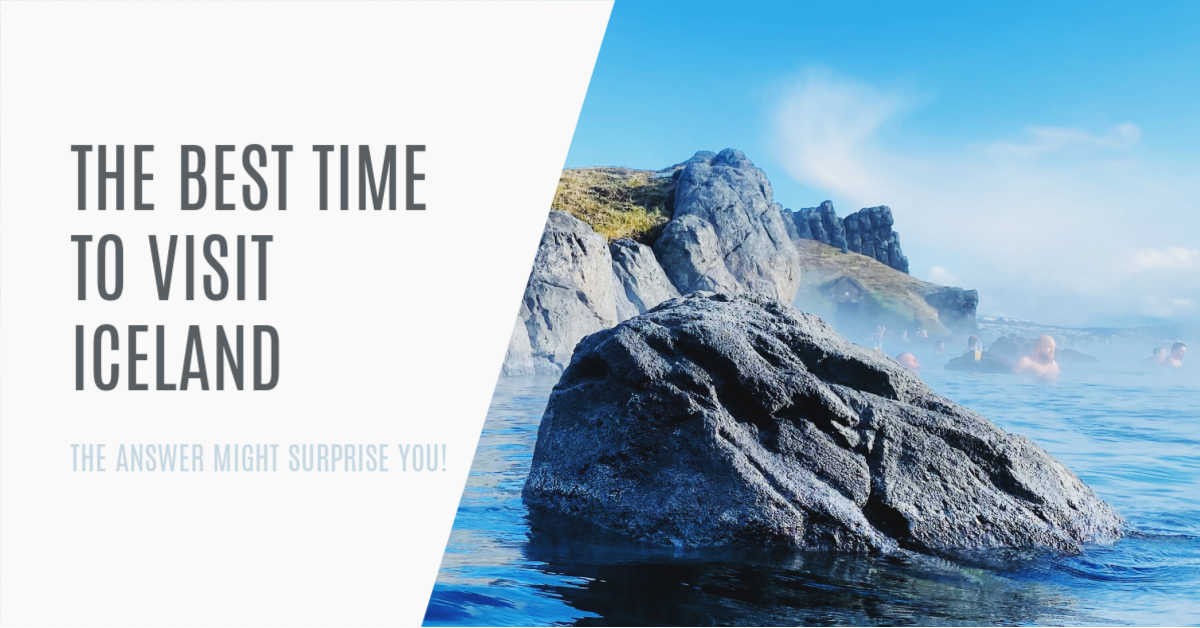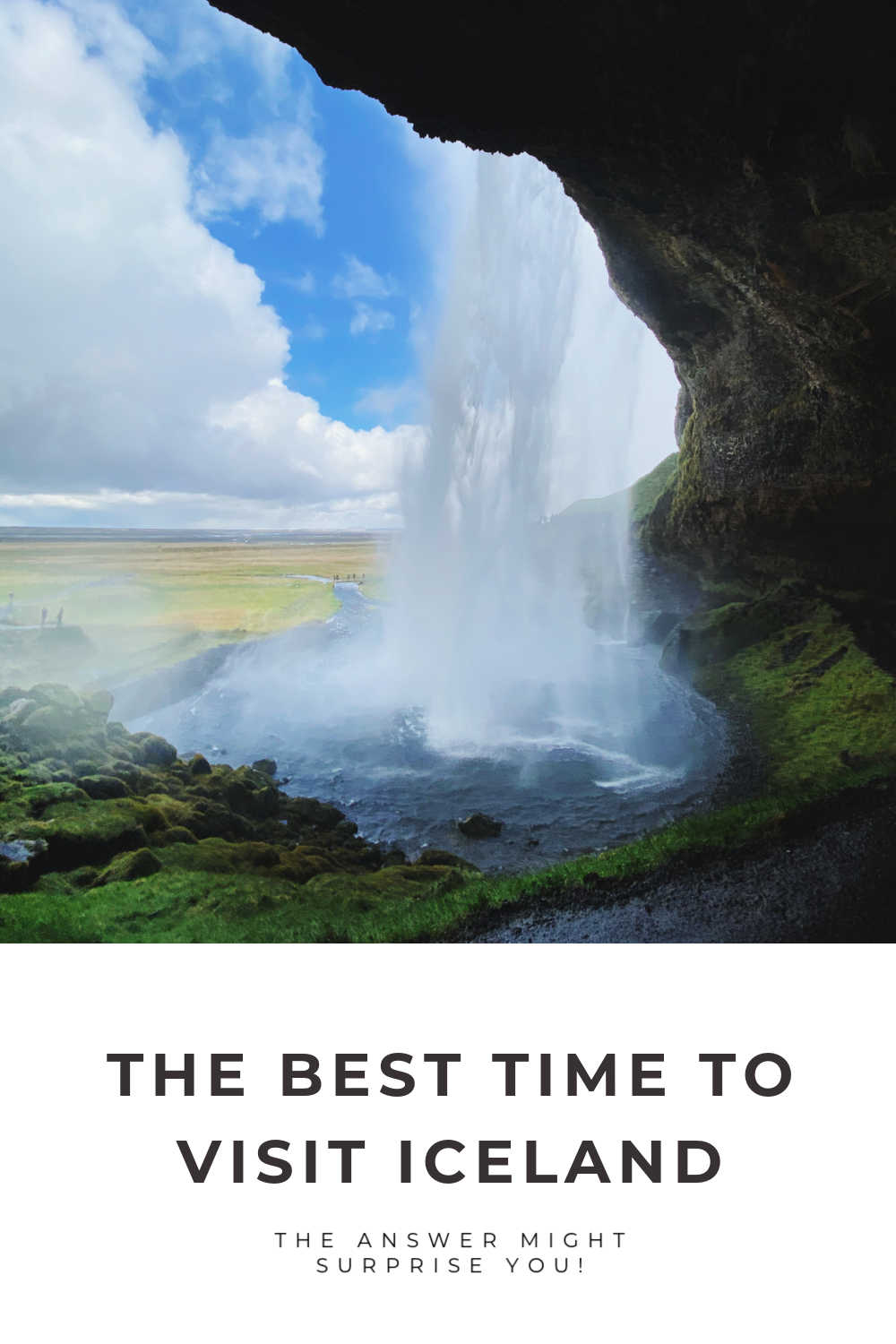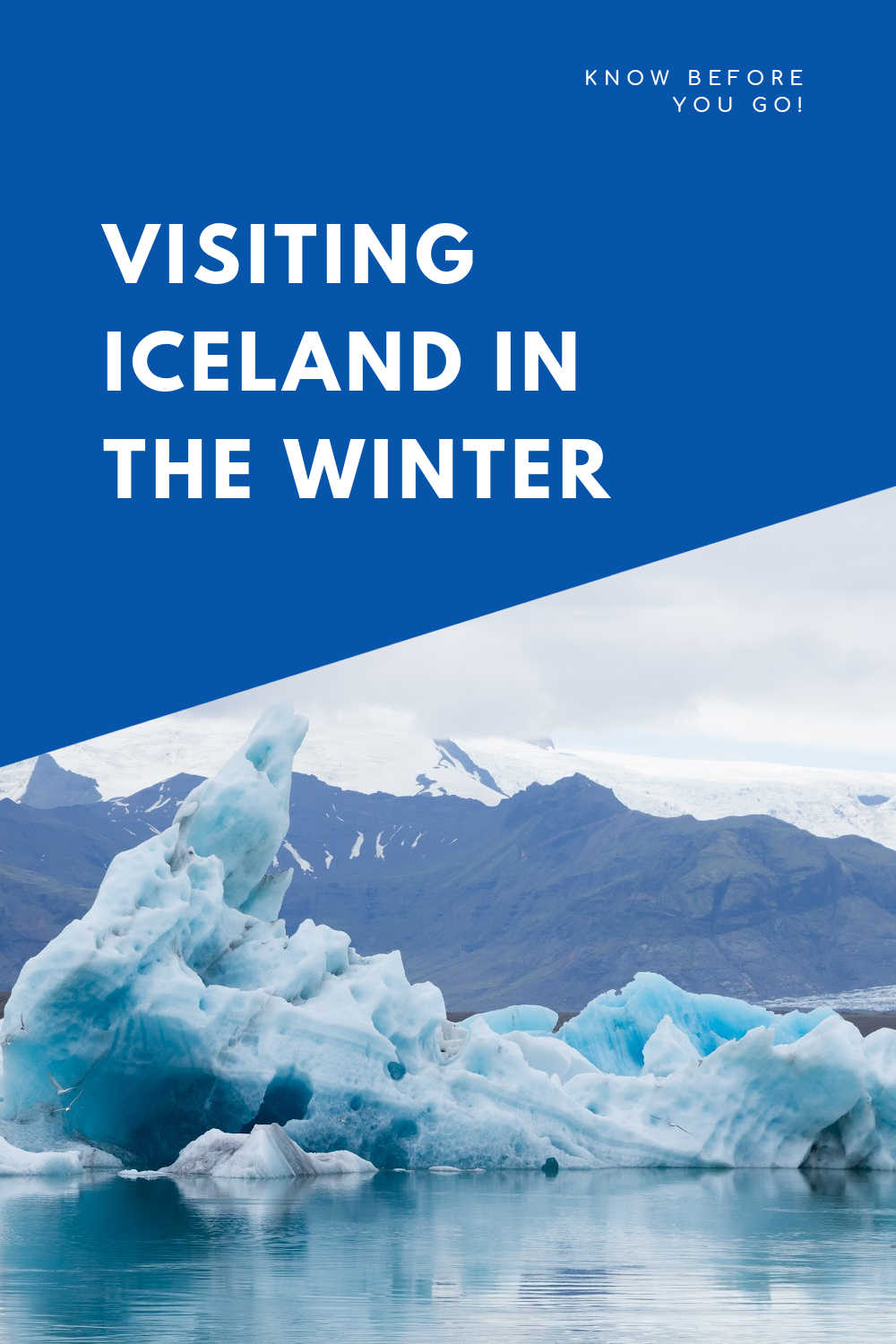rachelteodoro
The Best Time to Visit Iceland: The Answer Might Surprise You!
I don't like to be cold, so Iceland really wasn't at the top of my travel list. However, when my daughter and I started planning a high school graduation trip {that had to be thrice rescheduled...sorry class of 2020!}, the stopover flights through Iceland had me intrigued. We could add a stopover and explore a new country without any extra cost for airfare! So we booked the trip. We made the most of a 24-hour stopover {you can read about how we maximized our time here} and after getting a small taste of this beautiful country that my daughter says is like a colder Hawaii {an apt description}, it's definitely on my radar to explore again! So when is the best time to visit Iceland? Read on! The answer might surprise you!
The Best Time to Visit Iceland: The Answer Might Surprise You!
The airplane landed in Iceland at 6 am to a fresh layer of snow in May. We set out with our private guide to make the most of our time and before noon, we had seen snow, rain, and sun! Guess it's true what they say about the weather if you don't like it just wait 5 minutes! Iceland is becoming more and more popular, and while the winter used to keep people away because it seemed too harsh, it's now proving to be just as popular. Both the winter {October-April} and summer {June-August} have benefits for visiting. Let's break it down and you can decide for yourself!
Winter in Iceland
Our private guide Saga from Viking Women Tours, a lifelong Iceland resident, explained that Iceland in the winter is fairly mild. The weather rarely dips below 30 degrees Fahrenheit. However, it's generally not the cold that will thwart your plans, it's the wind! The wind can easily reach hurricane-force speeds and when combined with rain or snow, it can really put a damper on outdoor activities making them downright dangerous!
Winter is generally the longest season in Iceland and has some of the darkest months of the year lasting from October to April.
Driving in the Winter in Iceland
Many people rent cars to drive around Iceland. If you aren't used to driving in winter conditions, you probably shouldn't attempt renting a car and should try to stick to tour groups and private drivers instead. If you do rent a car, check road conditions often and be prepared! Also, buy insurance for all the things! I've heard nightmare car rental stories in Iceland, especially in the winter months!
Fewer Crowds
If you want to explore some of the highlights in Iceland with fewer crowds, winter is the time to do it. Sites will be less crowded since there are fewer tour groups and large vehicles dropping tourists off at all the stops. The winter days are short, so your time to explore is a bit more limited, but you won't need as much time when you aren't rubbing shoulders with a bus full of people!
Northern Lights
Seeing the Northern Lights is a bucket list item for many people. The Northern Lights are generally only seen in the winter season. The Aurora Borealis {or Northern Lights} is a natural phenomenon. They can't just be turned on or off. I am not joking, I have heard people ask when they go "on" like it's some Disney Animatronics show.
Clear dark skies generally provide the best opportunity for viewing and are generally best seen outside of the city far from the city lights. There are apps you can download to help you track the Northern Lights so you have the best opportunity to try to see them. The Northern Lights can often not be seen by the naked eye, but a photo taken on a tripod with long exposure {yes even on an iPhone!}, can often pick up this amazingly beautiful phenomenon.
Explore Ice Caves
Winter is the perfect time to explore ice caves. In the summer, the river rushes under one of Europe's largest glaciers, Vatnajokull, but in the winter, you can explore these beautiful blue ice caves. The ice caves are constantly changing in shape and accessibility as the ice freezes and thaws
Summer in Iceland
Iceland's summer starts in late May or early June and lasts through August. It is the most popular time for people to visit.
Midnight Sun
The midnight sun appears and allows the days to be incredibly long. The longest days around the summer solstice have about 21 hours of sunlight. This is perfect for exploring and hiking and provides the most beautiful backdrop with amazing sunsets and golden "hours" that can last for what seems like forever!
Driving in the Summer in Iceland
The midnight sun also allows travelers the ability to navigate unfamiliar roads easily so they aren't scrambling to reach a destination in the dark or before nightfall. This is also the perfect time to rent a camper van, a popular option for the more adventurous traveler.
Hiking the Highlands
The highlands are closed during wintertime but are accessible in the summer months and provide some of the most beautiful hiking around! Hiking gives you the opportunity to get off the beaten path and away from the crowds while taking in some of the most epic scenery you've ever seen! Viking Women Tours offers multi-day guided hikes through the Highlands. Let them take care of the overnight accommodations and food, and you can enjoy the hike!
Budget Accommodations
I don't enjoy camping, but that doesn't mean you don't! Camping options are plentiful in the summer months in Iceland providing a very different experience for travelers.
PIN THIS FOR LATER:
Are There Four Seasons in Iceland?
Because of the mild weather, spring and fall sneak in and blur the lines between summer and winter. You'll find the weather to be unpredictable in both spring and fall, so I'm lumping together a few seasons and we're assuming Iceland generally has two main seasons, winter and summer and you can make your decision to visit from there! Visiting Iceland in Any Month
If your travel is flexible, many of the main tourist attractions are open and accessible. The hours may be shorter {or longer} based on the season you visit, but you can take a dip in the various heated lagoons around the country.
The popular Golden Circle and South Coast routes which are often offered as guided tours with tour groups are available in both summer and winter months.
When is the Best Time to Visit Iceland?
Regardless of when you visit Iceland, you will be met with a unique experience! When it comes to deciding when to visit, you have to take into consideration the various factors and be prepared regardless of the season! You'll have more of an opportunity to experience the Northern Lights and Ice Caves in the Winter with fewer crowds and discounted rates on lodging. In the summer, you'll get to experience longer days and more areas are accessible to explore, though it will be more crowded and more expensive. You decide!
 disclaimer: this post may have affiliate links. By clicking on them and purchasing through them, I may receive a small commission. These small purchases help me to continue to keep writing content and creating at Rachel Teodoro. Thank you!
disclaimer: this post may have affiliate links. By clicking on them and purchasing through them, I may receive a small commission. These small purchases help me to continue to keep writing content and creating at Rachel Teodoro. Thank you!
loading..












No comments
Post a Comment